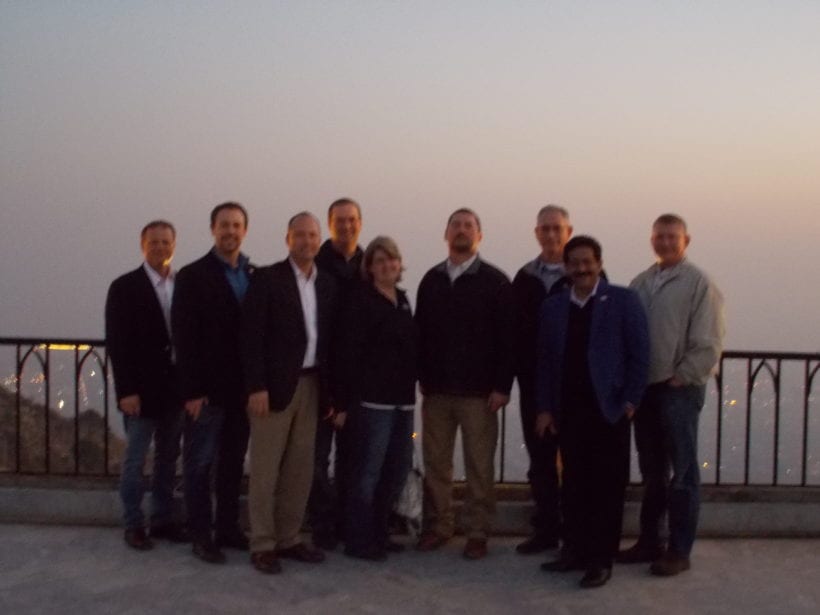USSEC Grower Leaders Participate in ASC Bangladesh – Pakistan Investment Mission
- Category:
- General News
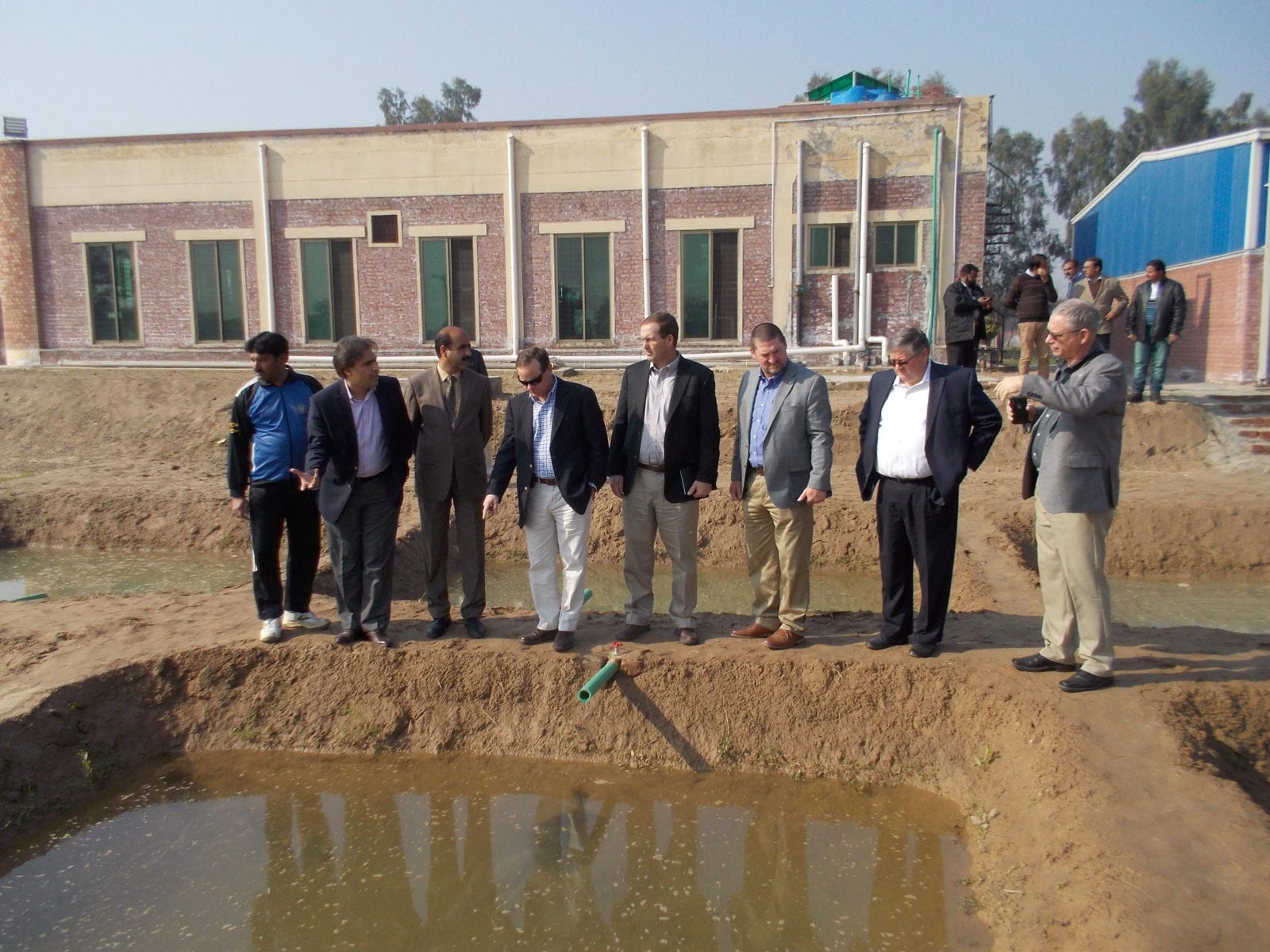
Building relationships with customers in emerging and growing markets is a key component in achieving the mission of building value for the U.S. soy industry and differentiating, building preference for and ensuring market access for U.S. Soy. Following that strategy, USSEC recently partnered with the Iowa Soybean Association (ISA) on an investment mission to Bangladesh and Pakistan, two countries in the Asia Subcontinent region. Leading the mission were two USSEC and United Soybean Board (USB) directors: Darren Kadlec, a grower from North Dakota, and Lance Rezac, a grower from Kansas. The trip spanned January 31 through February 7. The purpose of the mission was to gain a greater understanding of USSEC programs, opportunities and challenges in Bangladesh and Pakistan in order to enhance their ability to make strategic decisions as leaders serving on behalf of U.S. farmers on the USSEC and USB boards.
Bangladesh Events
The trip’s first stop was Dhaka, Bangladesh and the group received an outline of the current market in Bangladesh. Joining the group were Kent Sisson, Executive Director of the Food and Ag Export Alliance; Maria Dorsett, Agriculture Marketing Specialist with the Foreign Agricultural Service (FAS); and Elisa Wagner, Financial Analyst with FAS.
MD Masum Reja, the USSEC Country Rep for Bangladesh, conducted the review. Current market size & share of U.S. Soy in Bangladesh is 0 .454 million metric tons (MMT) for meal (share: 31%) and 1.1 MMT for whole beans (share: 85%).
On day two, the group attended a seminar on the GSM 102: Export Credit Guarantee Program hosted by the U.S. embassy office. The seminar was attended by 75 bankers and importers. The program works to help importers in Bangladesh (and many other countries) work with banks which get credit guarantees from U.S. banks so an exporter and importer are more comfortable to trade. This makes it easier for Bangladesh importers (including ag commodities) to buy U.S. ag products. Fee rates are currently based on the country risk that the guarantor is undertaking, including country-specific macroeconomic variables; risk of the foreign obligor (bank); the repayment term (tenor); and repayment frequency under the guarantee. In 2019, 34% of program usage was for soybeans and soy meal. The GSM-102 program defines various regions, and their “Asia Region” covers 20 countries, including Bangladesh.
The group then visited Krishibid Fisheries, a large fish farm.
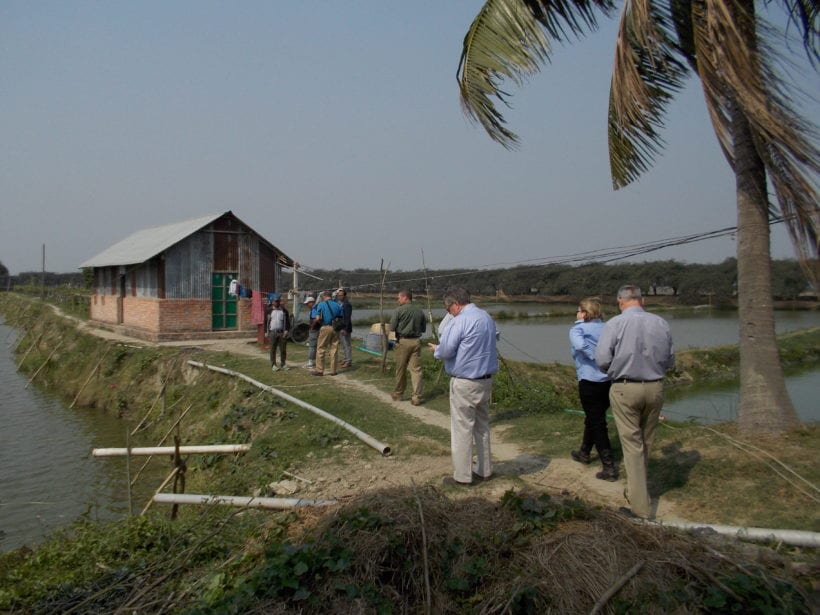
Managers at Krishibid were interested in seeing results in Bangladesh of demos of the new In-Pond Raceway Systems (IPRS) fish production method. The first IPRS demo in Bangladesh is scheduled for 2020.
Later, the group met with Meghna Group, which includes a large crush plant. In the last two years, Meghna Group has imported just under 860,000 million tons (MT) of soybeans. They said they prefer Gulf Port beans to Pacific Northwest (PNW) beans when buying from the U.S. because, in their opinion, the color of the meal produced was better. The group also met with the Officers of the Poultry Producers Association, who reported that the increase in poultry meat consumption has stalled the last year, partly due to consumer misperception that chicken is not as safe as other forms of animal protein.
The day concluded with a group dinner attended by U.S. Ambassador to Bangladesh, Earl Miller. The Ambassador highlighted the potential of Bangladesh as an emerging market for all trade with the U.S., including soybeans.
The next day was highlighted by a tour of City Crush, whose newest and biggest plant has 5,000 MT/day crushing capacity. They run 3 plants total with 8,000 MT/day capacity. The plant is located on a river with small boat docking for direct offload into the plant. The small boats take 1 day to move beans from a deep sea port where a 55,000 ton vessel transfers 10-12 loads onto shallow boats after drying in silos. The plant outputs 50 kilo bags of soy meal, usually outputting 8,000 bags/day.
The group watched while U.S. soybeans were being offloaded. Mr. Kadlec, after learning they were PNW sourced beans, said “I’m sure there were North Dakota beans in there, and as a grower, it’s really gratifying to see your product at the end-buyer.”
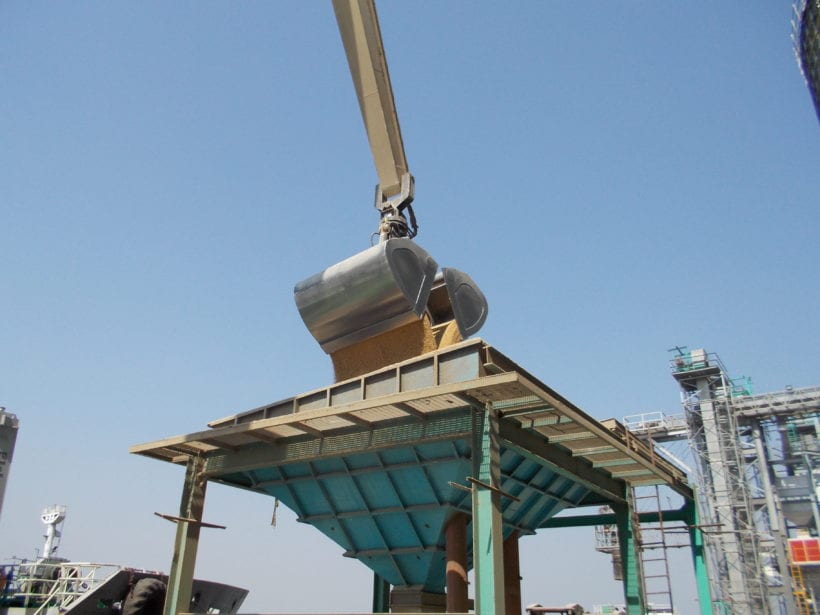
Bangladesh Key Takeaways
With 80 bigger, organized feed mills already producing 6 MMT of poultry feed and 2 MMT of aqua feed, Bangladesh is positioned to continue growth of U.S. soy imports. Two key developments are needed, based on what the group learned during the mission. First, there’s a need for continuing an increase in domestic consumption of protein. As Mr. Rezac observed, “There are a lot of people who do not consume enough protein. Anything that we can do to help promote efficiencies in animal and fish production will be greatly beneficial to these people. It seems to me there is a lot of potential over there as people can afford more protein.”
Secondly, aqua producers were looking at developing an export market to drive an increase in production, especially if adoption of IPRS systems begins. Bangladesh is already the fourth largest producer of fish in the world. “The rapid growth and acceptance of technology especially in the poultry sector was impressive,” said Mr. Kadlec. This bodes well for future growth.
Pakistan Events
Current market size and share of U.S. Soy in Pakistan is 1.75 MMT of whole beans (share: 64%). There is a growing crush, poultry, aqua and dairy sectors. Overall in Pakistan, the soymeal market is 85% poultry, with the remaining 15% going into dairy cattle and aqua feed.
GMO products are officially restricted, but crushers are importing GM soy. USSEC provided technical consulting to crush plants in 2014 and since then, imports of U.S. beans have been as high as 2.1 MMT. Crushers there anticipate that in five years, Pakistan can import 5 MMT of soybeans if they can develop an export market for soymeal, as domestic consumption of oil can continue to grow. Consumption demand for about half a million tons of soy oil offers opportunities for crushing more U.S. beans. The Pakistani government is looking to subsidize development of the export fish market as well as increase domestic consumption of fish. IPRS demos in Pakistan have shown you must use soymeal in fish feed to get the results farmers want and it has to be floating feed. In traditional pond fish production, fish feed can be less soy. Developing more fish farms with IPRS systems would create more demand for soymeal.
After traveling to Karachi, the group started the tour of Pakistan at Shujabad Agro Industries. They have a crushing plant built in 2000, originally set up for canola oil only, but began importing and crushing soybeans in 2014 to meet meal demand of the poultry industry. The company includes Eva Group, the sister company of Shujabad Agro Industries. Eva Group is responsible for the branding, marketing and sales of Eva oils.
The group also toured Karachi Grains, another newer crushing plant producing oil and soymeal for the feed industry.
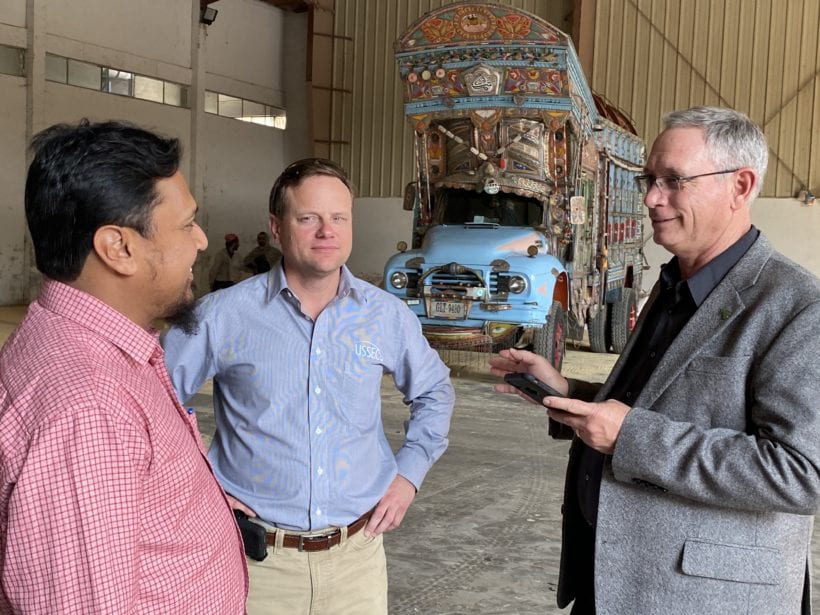
The next day, the group toured Sindh Feed mill, one of the oldest poultry feed mills in the country and the largest feed mill operation in Sindh Province. It started with poultry feed, but they are now producing fish and cattle feed as well. The Group also has a crush plant, MA Oils.
Dr. Muhammad Munawar, Production Manager at Sindh Feed, shared some interesting observations with the group. First, he predicts in five years, aqua feed production will be as big as poultry feed. In March 2020, they are starting a new sea cage production operation to raise sea bass; 100% of sea bass would be exportable. Second, he explained how feed mills in Pakistan have set prices so they compete on quality of feed. The energy and amino acid profile of soy meal is critical to feed mills, which look for consistency in the amino acid profile of soy meal.
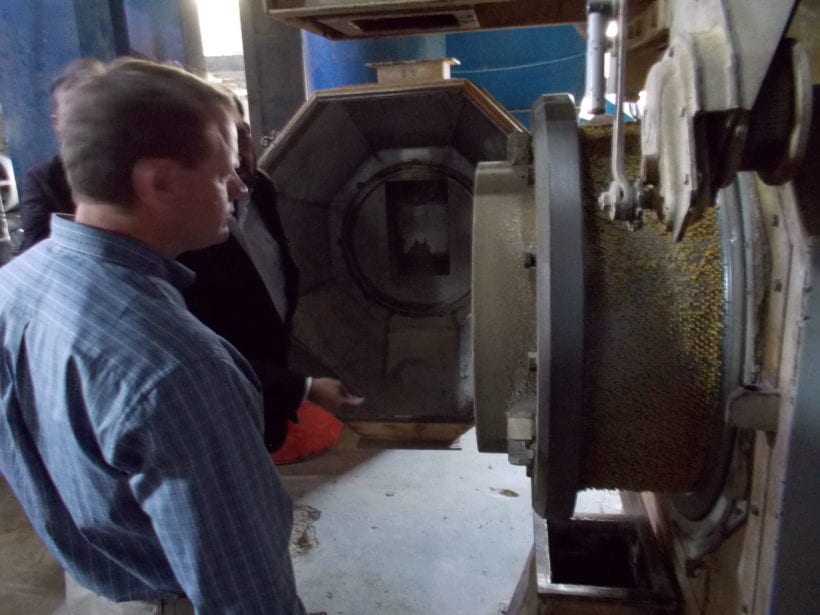
Before leaving Karachi, the group met with the Commercial Head & Senior Trader of Cargill – Pakistan team, Anas Haroon. Cargill started its operation in Pakistan in the year 1984. Cargill’s Pakistan operations are comprised of the trading and handling of animal feed, agriculture commodities and industrial products. They are the largest supplier of palm oil and oilseeds in Pakistan. Mr. Haroon shared with the group his observation that in Pakistan, relationships are of vital importance to industry and business leaders, especially with import partners. This observation emphasized the importance of missions such as this one, so the U.S. producers could meet in person and develop relationships with buyers of U.S. Soy.
After traveling to Lahore, Pakistan, the group then visited the University of Veterinary and Animal Sciences, fisheries department at the Pattoki Campus. An extensive tour was led by the Head of the Fisheries Department, Dr. Noor Khan. Mainly, the campus conducts trials and demonstrations while educating students. All that knowledge and expertise will produce highly skilled professionals in the field of fisheries and aquaculture to meet the demand of a growing fisheries industry so farmers can successfully raise more fish for both domestic and export market. The facilities were built between 2005 and 2007 and include hatcheries, production ponds, labs, and even a fish processing demo building. They host educational seminars for producers throughout the year as well.
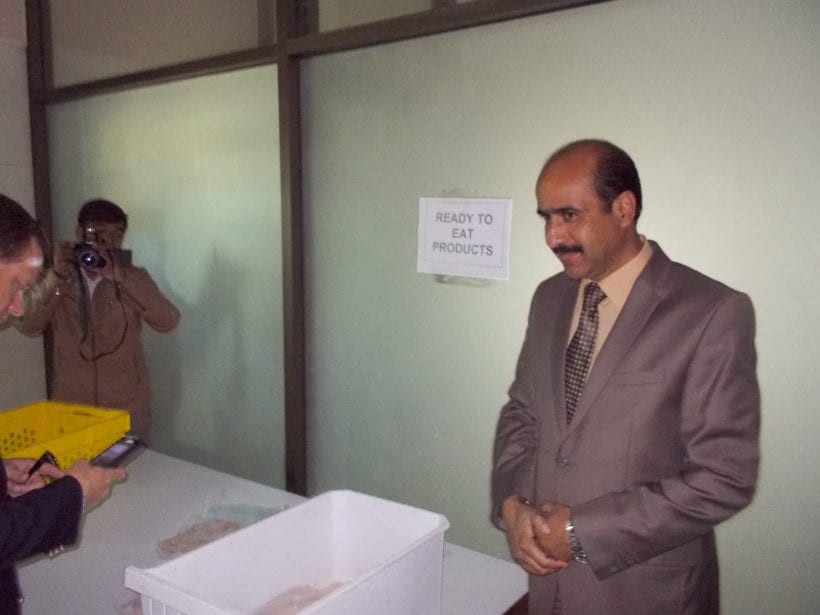
Dr. Khan said fish farmers need lower cost of feed for future development. They currently only get 100 rupee (80 cents) per kg of fish and that’s not profitable for many fish farms. They need better fingerlings, better feed, lower cost on both; but the bigger, progressive farms are having early success with the IPRS demos, which have shown that in a 22 x 5 meter cell, 32,000 fry can be produced, compared to about 800 per acre in a traditional pond system.
One interesting project at the campus is the recently built snakehead breeding ponds. Farmers wanted to raise snakehead species because the market price is high, but all the fry had to be imported from Vietnam and were expensive, plus the mortality rate is high. So the university is developing a breeding hatchery to provide fry locally to farmers who want to raise them.
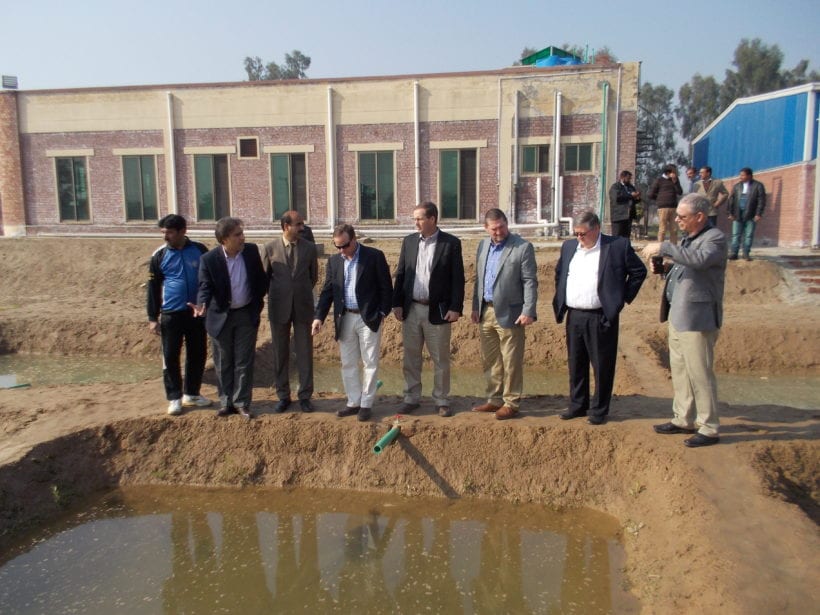
Later in the day, the group had a meeting with the leadership of the All Pakistan Solvent Extractors Association (APSEA). Dr. Muhammad Arshad (Chairman APSEA) and Nawab Shahzad Ali Khan (Patron APSEA) asked the grower leaders about the U.S. soybean crop predictions and current market situation. They also shared their vision for expanding the Pakistan Oilseed Summit (POS) in 2020. During the inaugural POS held in December 2019, a formal signing ceremony was held at which 46 total buyers signed a certificate and affirmation of intent to purchase nearly half a million metric tons of U.S. Soy from two different shippers with delivery
The final day of the mission took place in the capital city of Islamabad, Pakistan. The group attended a meeting at the Pakistan Ag Research Center (PARC) and talked with Dr. Muhammad Azeem Khan, Chairman. PARC is in many ways similar to U.S. Agricultural Research Service. The PARC manages 94 total labs plus demo sites around Pakistan. They are developing an aqua feed mill near Islamabad which will work on processes for producing the best fish meal for each species from marine species to trout as their dietary needs are different. Dr. Khan confirmed that the government is emphasizing aquaculture development. Pakistan has access to cold water from rivers originating in the Himalayas. Fish is generally only consumed during the winter because of the lack of cold chain supply. PARC also supports the development of feed lots for fattening livestock and promotes cage culture production in marine species.
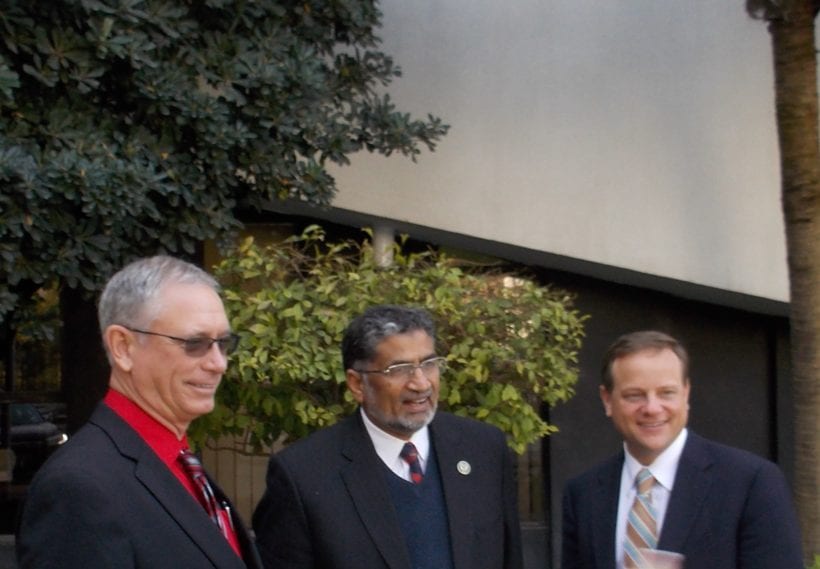
The group next met with U.S. Ambassador to Pakistan Paul Jones at the U.S. Embassy offices. The Ambassador shared that the Pakistan Minister of Agriculture has fully supported biotech in general and has suggested continued / more missions to visit the U.S. to learn more about GM crops. The storyline of soybean trade with the U.S. is that it can become the basis for developing a value-added export market for crushers, feed mills, and aqua and poultry producers as well.
The final meeting was with the Poultry Producers Association Chairman, Dr. Muhammad Aslam. He shared many insights with the group about the poultry industry in Pakistan, which produces 3 breeds totaling 14 million broiler breeders and 75 million layers. He said that public education is needed to increase demand and consumption, and although consumption growth rate has stalled lately, he predicts after 5 years, growth will be up by 30%. There is an export market for both consumption and hatching eggs.
Pakistan Key Takeaways
One important thing learned and observed was that the crush and feed and animal production industries in Pakistan are all adept at and quick to adopt new technologies. Mr. Rezac said, “It was quite impressive what Pakistan did with their poultry industry in the last five years to modernize it using U.S. Soy.”
Adopting new technology has really been the fuel to spur the quick growth of Pakistan as an importer of U.S. soybeans. As Mr. Kadlec observed, “I really liked learning that at the feed mills in Pakistan, a trained nutritionist had decision-making authority for ingredients, and they preferred U.S. soymeal for all the reasons we know and share with potential buyers.”
The other key message the group heard from many in the soymeal industry in Pakistan is that developing export markets is going to be key to future growth. While domestic consumption of oil, poultry and fish could all be increased, the significant increases would occur with the export of soymeal, broilers and processed birds and fish.
It was a whirlwind week that included ten meetings, seven facilities tours, seven flights to and through five countries and two U.S. Ambassadors; as well as some spectacular group meals. The mission purpose of meeting with industry participants; reviewing current strategy and current market opportunities; and considering future investment opportunities for USSEC was achieved. The sheer amount of knowledge gained and relationships developed confirmed the value of investment missions such as this. “To me, this means the work that USSEC is doing is working,” said Mr. Kadlec.
